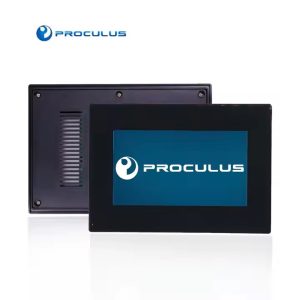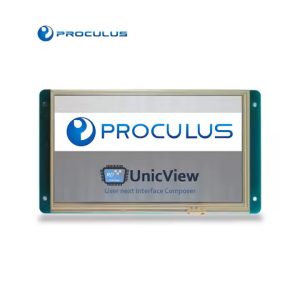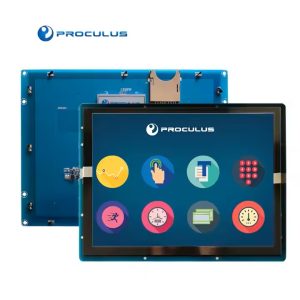Exploring Touchscreen Technologies: Capacitive vs. Resistive

Introduction
Do you also believe that capacitive touchscreens are always better than resistive?
You probably think that way because display types with capacitive touchscreens are often associated with high-quality technology and daily life use, such as smartphones.
However, in many other examples, one can see resistive touchscreens dominating the application segment. This happens because resistive touchscreens do have their own advantages.
Not all touchscreens are created equal, and choosing the right one and reliable electronics manufacturer for your project is crucial.
Much like deciding between OLED and LCD, the choice between capacitive and resistive touchscreens depends on your application’s specific requirements.
In this article, I’ll take you inside touchscreen technology, exploring the differences between capacitive and resistive touchscreens, their advantages and disadvantages, and when to choose one over the other.
What is the difference between capacitive and resistive touchscreens?
Both types of touchscreens serve as essential components of modern display technology, enabling seamless and intuitive user experiences.
What unites them is their fundamental purpose: detecting and responding to touch input.
how does a touchscreen work?Capacitive touchscreens rely on the conductive properties of our skin to register touches, offering the advantage of high responsiveness and multi-touch capabilities.
On the other hand, resistive touchscreens use pressure-sensitive layers that come into contact when pressed, making them versatile and suitable for various input methods.

All of this is made possible by a very specific material: the transparent conductor. The most commonly used material in touchscreen technologies is Indium-Tin Oxide, or ITO. Many materials are being studied to replace ITO, as described by Mr. Hendy, but ITO dominates the actual market.
ITO is deposited in such a thin layer that it becomes highly transparent (with very high transmittance in visible light) while also conducting electricity. This dual characteristic is crucial for both touchscreen technologies we will explore.
Capacitive Touchscreen Displays
Capacitive touchscreen displays are a modern and advanced option made of an insulator, typically glass, coated with a transparent conductor (ITO).
A first layer and a second layer, both coated with conductors and insulated by the glass, create this capacitive pattern.
These screens respond to conductive inputs, such as a fingertip, without requiring pressure. This feature makes them a common choice in consumer products like smart home, smartphones, tablets, appliances, and monitors.
Capacitive touchscreens detect changes in capacitance caused by the screen’s electrostatic field when touched. This technology enables touch gestures and multi-touch inputs, making it ideal for applications that require intuitive and responsive interaction.

Figure 1 Capacitive touch with pattern electrodes in different layers
Advantages of Capacitive Touchscreens
· Multi-touch Capability: Capacitive touchscreens support one to five simultaneous touch inputs, allowing for intricate gestures and interactions.
· Superior Image Quality: These screens deliver brighter, higher-contrast images due to their panel construction, which includes built-in cover glass for added durability.
Disadvantages of Capacitive Touchscreens
· Higher Cost: Capacitive touchscreens are generally more expensive to manufacture than resistive alternatives.
· Sensitivity to Environmental Factors: They can be less responsive when users wear certain types of gloves, and they may register accidental inputs from conductive elements like water.
When to Choose a Capacitive Touchscreen
Capacitive touchscreens are the ideal choice for sunlight readable display and applications that demand advanced touch responsiveness, multi-touch capabilities, and high-quality image displays. They truly shine in situations where intuitive and precise touch interactions are absolutely essential.
Best used with Operational Systems like Android modules.
Resistive Touchscreen Displays
Resistive touchscreen panels detect pressure on the display’s top layer and send a signal to activate touch functionality.
These screens can be operated with a stylus, gloves, and various other objects.
They are constructed without cover glass and are typically made of plastic, which makes them more vulnerable to dents and scratches.
Resistive touchscreens consist of two resistive coating layers separated by a gap or space layer. This space is created by a pattern of small little semi-spheric isolators distribution between the two layers.

Figure 2 Resistive touch screen layers [Phares, Robert; Fihn, Mark DOI:10.1007/978-3-540-79567-4_63]
A ‘touch event’ occurs when the top layer makes contact with the bottom layer, closing the circuit. Each layer features horizontal and vertical lines to determine the precise touch location.
Advantages of Resistive Touchscreens
· Insensitivity to Environmental Factors: Resistive touchscreens do not respond to accidental inputs from water spills or lightweight debris, making them suitable for rugged environments.
· Compatibility with Non-organic Inputs: These screens can be operated with various objects, including styluses, pens, gloves, and fingers.
Disadvantages of Resistive Touchscreens
· Limited Visibility: Resistive touchscreens may have reduced visibility in direct sunlight.
· Lack of Multi-touch Support: They do not support multi-touch inputs and may not be suitable for applications requiring complex gestures.
When to Choose a Resistive Touchscreen
Resistive touchscreen technology is the optimal choice for industrial display and applications in rugged environments, situations with indirect sunlight, and for straightforward touch interactions. Their resilience against environmental factors and compatibility with various input methods make them dependable solutions when precision and versatility are important.
Conclusion
In the world of touchscreen technology, capacitive touchscreens are the reigning champions in consumer electronics and smart home applications, offering advanced capabilities and superior image quality.
However, resistive touchscreens still hold an advantage in specific scenarios. If you require a cost-effective touchscreen for simple tap inputs in rugged environments, resistive technology is the way to go.
For more advanced and intuitive touchscreen interactions with high-quality applications, capacitive touchscreens are the preferred choice.
When selecting the right touchscreen for your project, carefully consider your specific requirements and the environmental conditions in which it will operate.
To learn more about touchscreen displays and display technology, feel free to get in touch with our experts today.

 English
English


